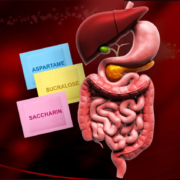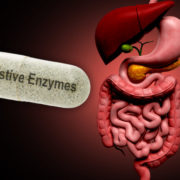Subtotal: $8.95
If You Have an Irritable Bowel…
It seems many people experience digestive issues, from constipation, heartburn, and many types of irritation in their bowels. Many people are avoiding some food or ingredient—from gluten, most often found in wheat and bread products, to certain ingredients that are found in food, at least the foods that are available today. I have a slight hiatal hernia, a tear in the lining between my stomach and my lungs, and that can cause reflux; eat too much and I pay the price. Based on a recently published study, those of us who have any type of irritated digestive system just might find the answer in the produce section of our markets.
Researchers used the UK BioBank database to find subjects who had completed five of the 24-hour dietary recalls in a follow-up period of nine years. With that criterion met, subjects were recruited through electronic medical records as having conditions related to the digestive system under the umbrella term total irritable bowel. The researchers used the dietary history to identify all the foods the subjects ate that contained the phytonutrient quercetin; prior research had shown that the consumption of fruits and vegetables with that nutrient showed some benefit for people with digestive issues. The researchers wanted to confirm or refute those observations.
The researchers were able to identify 2,293 participants with serious digestive issues in the database. Diet information was collected using 24-hour dietary recalls; the researchers determined quercetin intake based on nutrient databases that estimated the amounts in the foods consumed.
The researchers were interested in two specific outcomes: enterotomy (the surgical opening of the digestive system to repair damage) and all-cause mortality. The researchers analyzed the data to estimate hazard ratios: the probability that someone will experience those outcomes over the follow-up time, which again, was over nine years. What did they find? I’ll let you know on Tuesday.
What are you prepared to do today?
Dr. Chet
Reference: The Journal of Nutrition. 2024;154(6):1861-1868
 Health Tips for Women
Health Tips for Women 








